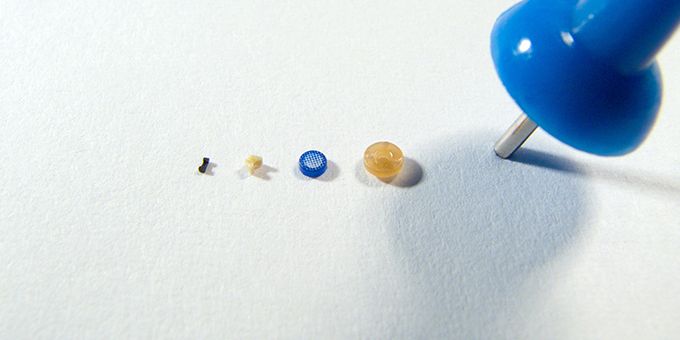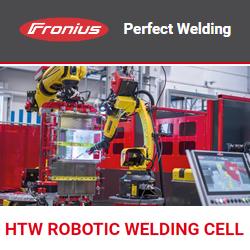Put simply, vertical integration is a strategic structure which means that a company owns the supply chain for its products or services. Fundamentally, this is considered to be important as it implies a certain and robust degree of control over operations.
 Vertical Integration – The Key to Micro Molding Success
Vertical Integration – The Key to Micro Molding Success

Aaron Johnson, VP of Marketing and Customer Strategy | Accumold
You will be aware that many companies emphasise and claim to be vertically integrated across many industry sectors. There is for sure a perceived strength in being vertically integrated, hence the prominence of the statements that are metaphorically shouted from the rooftops, but as is often the case, many claims flatter to deceive.
First of all, it is probably useful to get a grip on what is meant by true vertical integration, and why it is important. Once this has been established, the focus will be on why for a micro molding company vertical integration is not just important, but is in fact vital for success, and optimal manufacturing outcomes.
VERTICAL INTEGRATION
Put simply, vertical integration is a strategic structure which means that a company owns the supply chain for its products or services. Fundamentally, this is considered to be important as it implies a certain and robust degree of control over operations (something under particular scrutiny today as companies assess the damage inflicted by the disruption caused by the coronavirus pandemic), an ability to offer lower prices, and also having increased market control.
Vertical integration conveys a likely advantage over competitors, reinforced by the ability to provide a lower-cost, higher quality product or service to customers. Independence from suppliers in the value chain is key, as this allows control over costs, and the unpredictability that occurs when relying on 3rd party supply. Vertical integration increases process efficiency, and this promotes greater time efficiency and shorter lead times.
MICRO MOLDING
Across the world, there are a number of companies that seek to position themselves as providing precision plastic molding services. The word precision is used advisedly here, as it is vague and to an extent all encompassing. Put bluntly, what is precision for company “A” maybe be anything but precision for company “B”, so the phrase has a degree of opacity that is unhelpful.
Precision molding services therefore cover a huge spectrum of part sizes and feature sizes on parts. When looking at the larger part size and lower tolerance side of the market, vertical integration and the ways that customers and supplier “partner” and interact is less critical to success. If parts are produced close to specification, are delivered close enough to time, and on cost, job done. Scrutiny on who in the supply chain is producing what and when is less relevant than is the case when moving into the area of precision molding that is better described as micro molding.
Micro molding is an art and science that holds a particular place in industry. In this sector, the achievement of truly exacting and sometimes almost impossibly tight tolerances are key drivers, and in many instances the demand is for tiny parts sometimes the size of a grain of salt, or slightly larger parts with sub-micron feature sizes. When micron tolerances matter, suddenly the customer and micro molding provider must enter into a different and closer partnership in product development, and it becomes hugely important that the micro molder owns, manages, develops, and innovates in every aspect of the supply chain.
THE PROCESS OF BUILDING MICRO
Effectively, every part of the product development process when micro molding has the ability to introduce loss of tolerance. When the key to product success or failure is less than a micron variation on a critical feature of a component, having control of each aspect of the product development process is critical.
And the key is not just to control each element of the process, but to have it residing under one roof. Why is this important? Well, there is the obvious advantage of teams working together to create optimal outcomes, but also very practical reasons. When working in the world of micron tolerances, even shifting a part from one location to another to undertake metrology tests and validation can introduce errors as the humidity change can cause changes in part geometry. No-one said micro molding was easy!
So what are the stages involved in a micro product development process that should be controlled by a micro molding service provider. Well, there are 5.
• Design & Material Assistance
• Micro tool design and fabrication
• Micro Molding
• Metrology & Validation
• Automated Assembly/Packaging
In the area of true micro molding there are only really a handful of companies that can credibly claim to achieve the level of tolerances required by customers from numerous industry sectors, and even less that can prove rather than just claim true vertical integration.
It really is important on so many levels that it should be the first question that any customer asks of a prospective micro molding partner.
MORE THAN JUST A PROCESS
Over-riding everything, and again playing to the need for true vertical integration is the required customer/supplier relationship that is at the heart of successful micro molding projects. A micro molder is not a job shop, but is instead a product development partner, and this requires a close and productive relationship with customers. Fundamentally, a micro molder should be able to influence the tricky area of Design for Micro Manufacturing (DfMM). Micro molders understand issues such as design for tolerance achievement, optimal gate locations, flash and mismatch, and can give advice on prioritising and limiting critical dimensions, and material selection for optimal outcomes.
The objective of all micro molding projects is the timely, cost-effective, repeatable manufacture of often complex and extremely accurate parts and components. The key is to get it right first time, and this can only be achieved by all teams in each stage of the product development process — from design to automated packaging — being engaged early in the process. A great looking design may be impossible to tool. A customer’s innovative concept may seem like the next big (but small) thing, but it would not mold successfully in the material chosen etc… etc…. You get the picture. Collaboration early in the design phase addresses such potential issues, and this is obviously streamlined and more efficient if all departments work and reside in the same facility.
Finally, it goes without saying that while vertical integration is absolutely vital for successful micro molding outcomes, it must be coupled with other attributes. There is no substitute for experience, and the most reliable micro molders operating have decades of experience working to achieve exacting tolerances and innovative cutting-edge products for their customers.
Also, while micro molders build things small, they are also often charged with building these small products in the multi-millions and even billions. As such, you will find that the best micro molders reside in facilities that are large enough to accommodate such production cells, and have the infrastructure to ramp up to mass manufacture which may continue for many years.
SUMMARY
Ultimately, the take-away, and what leading micro molders are continually asking customers to do is look properly under the hood before selecting a micro molding partner. Your product development plans are too strategic, too costly, too critical to your future success not to do your homework.
These days, when websites are the first port of call when selecting a supplier, it is too easy to take claims for granted. Customers should interrogate their short-listed suppliers and make them prove their claims.
Claims of vertical integration are top of the list, and a neat form of words will in fact mask the fact that a micro molder does not have in-house tooling, or that the validation process is outsourced, or the ability to advise on design and material choice is somewhat limited.
There is no substitute for a visit, and top micro molders will insist that you attend their facilities before true engagement. When you do this it will be very obvious very early whether claims of vertical integration can be substantiated as they really need to be to ensure successful outcomes.
Aaron Johnson is the VP of Marketing and Customer Strategy at Accumold. The company has grown to a 130,000 square foot fortified facility designed for assurance of supply, employs over 350 staff, and is a net exporter shipping all over the world every day from its Ankeny, IA, USA facility which runs 24 hours a day, 7 days a week.
The content & opinions in this article are the author’s and do not necessarily represent the views of ManufacturingTomorrow
Comments (0)
This post does not have any comments. Be the first to leave a comment below.
Featured Product

